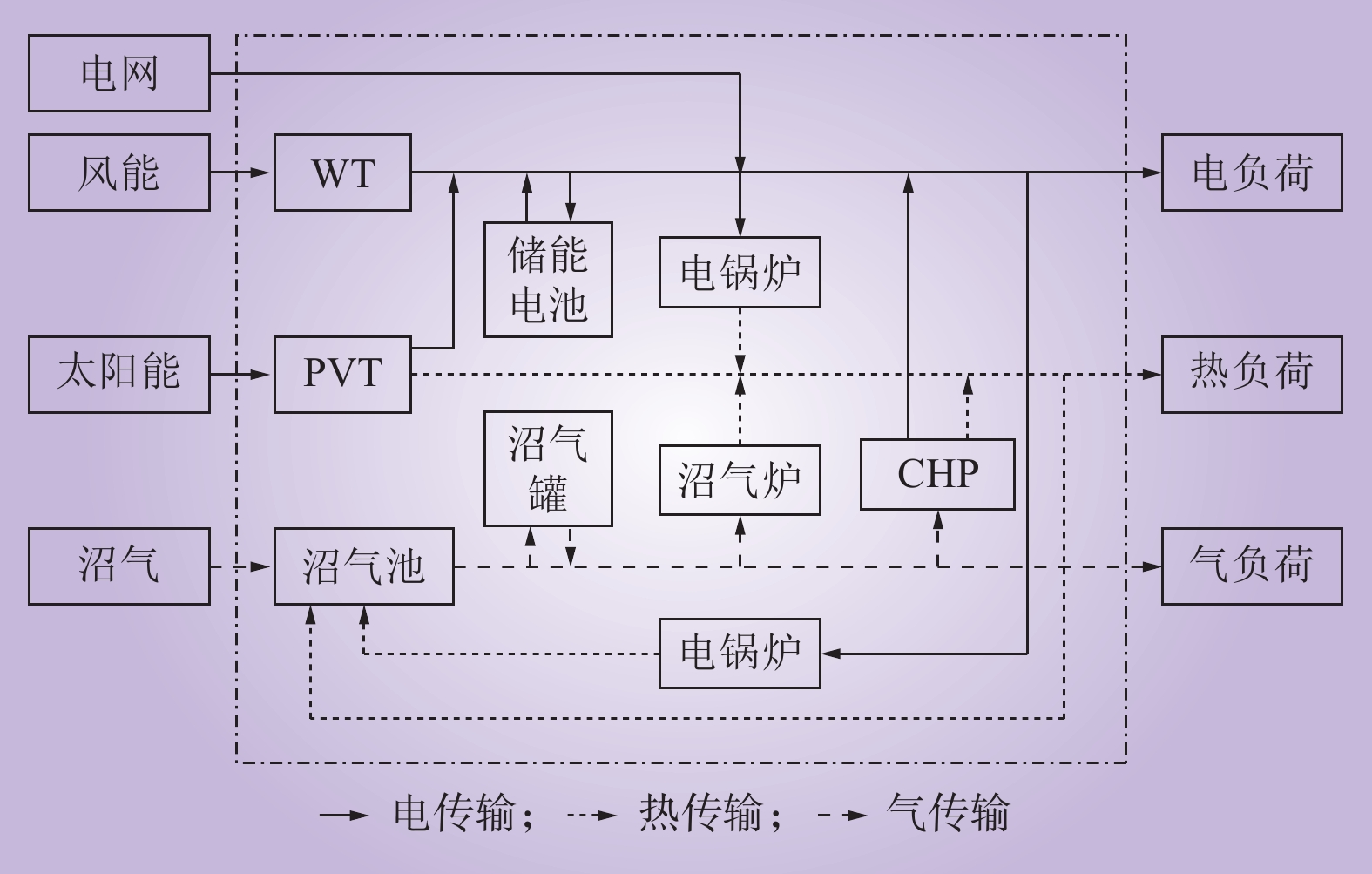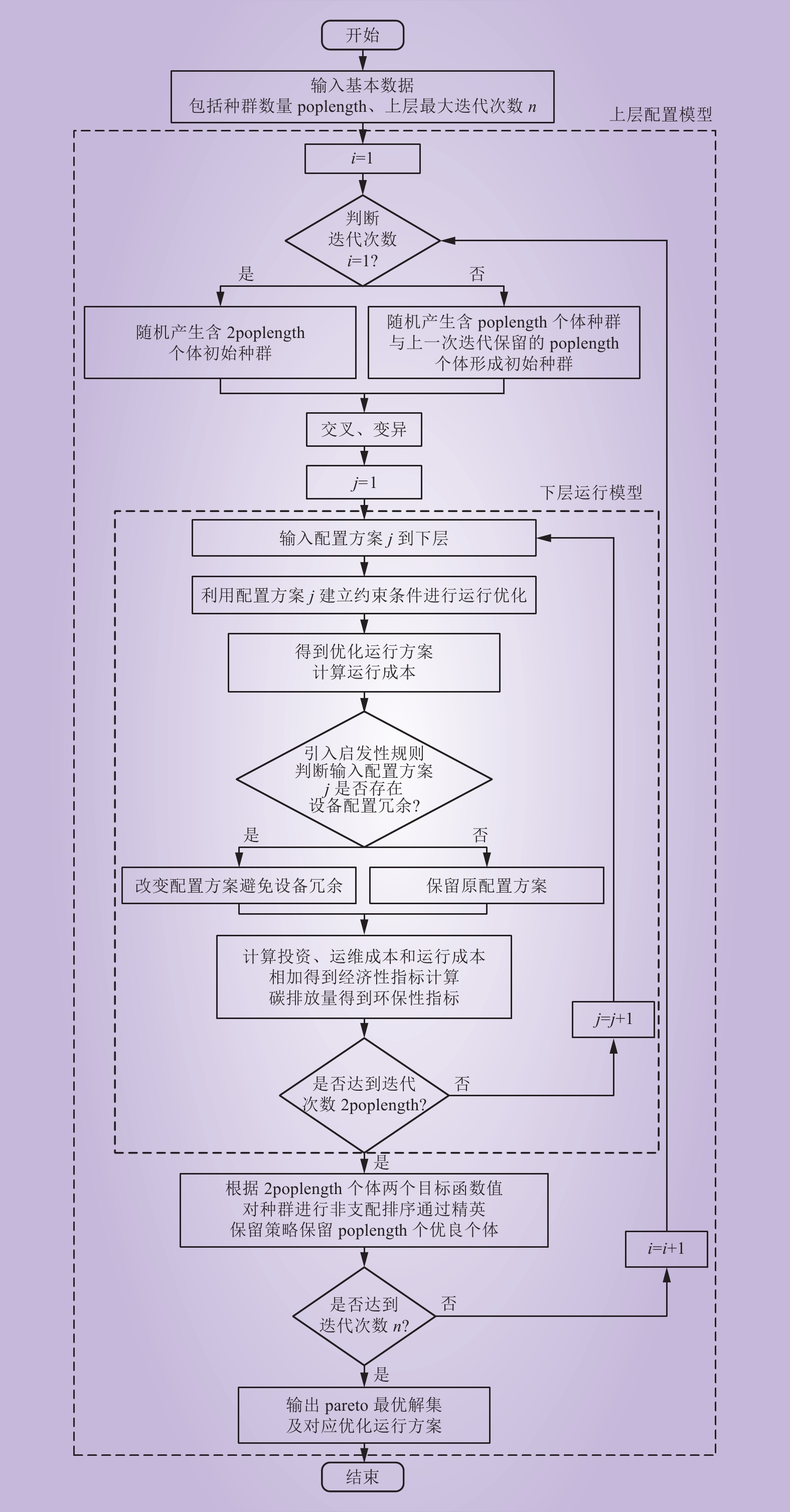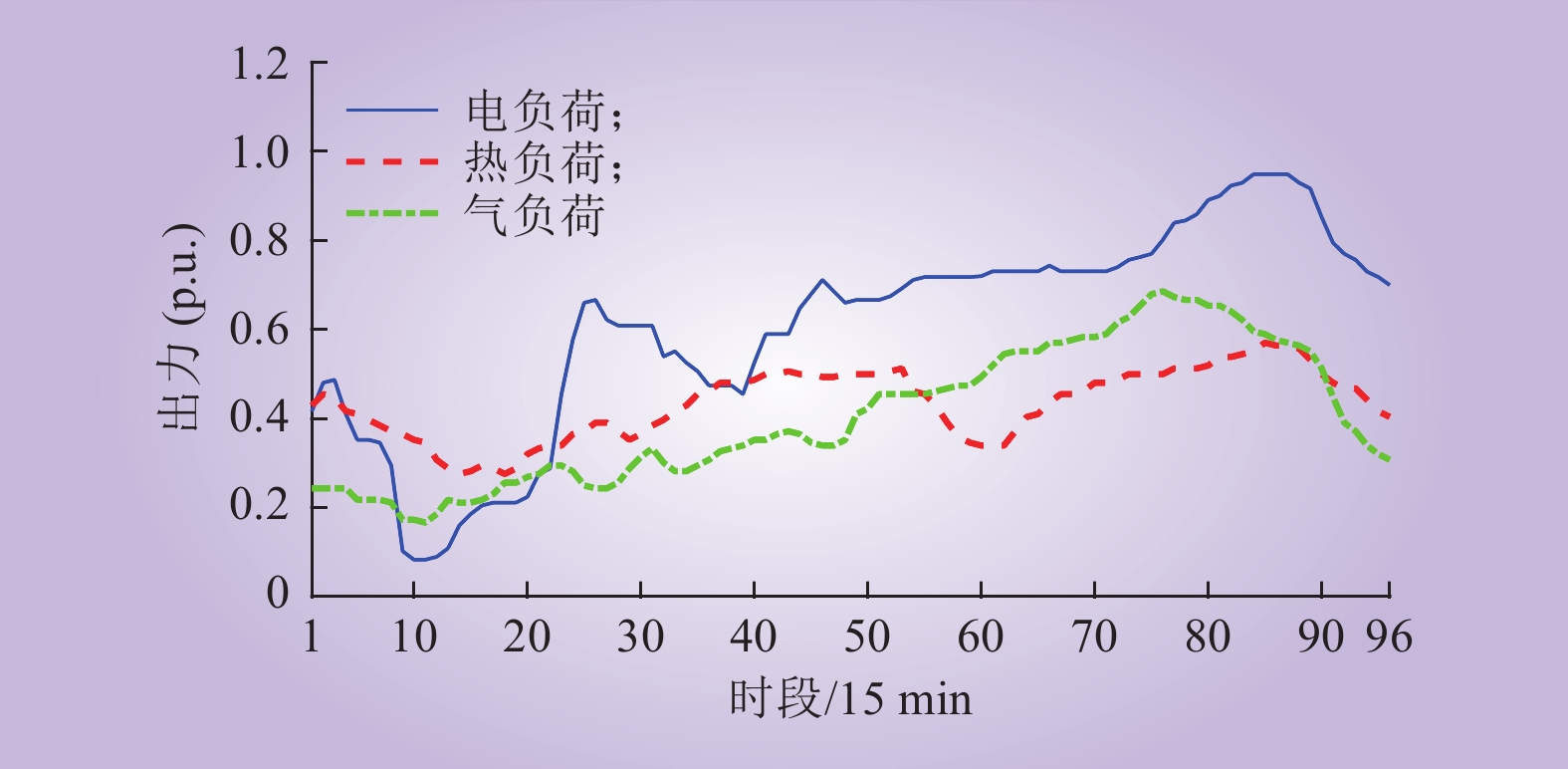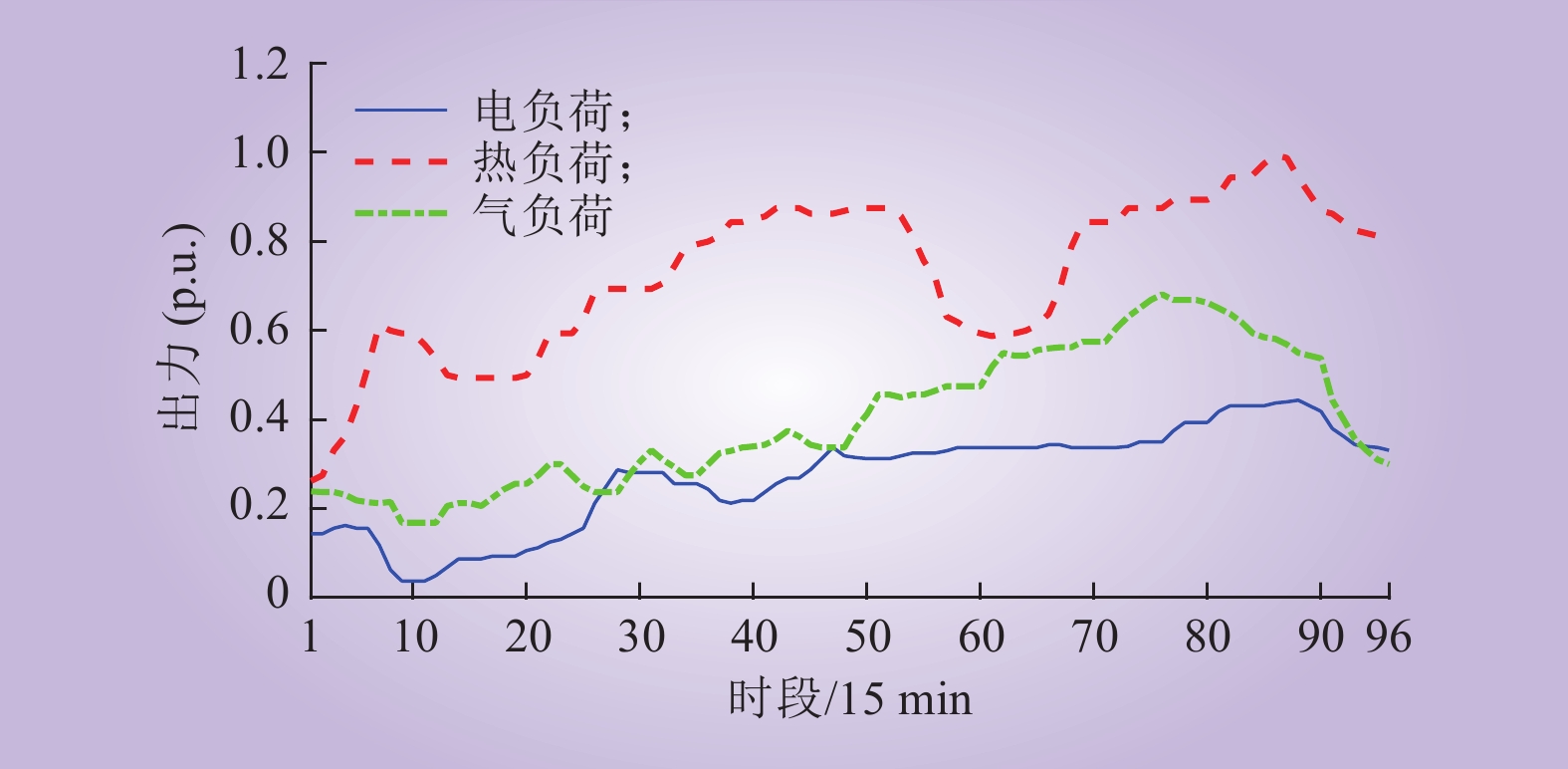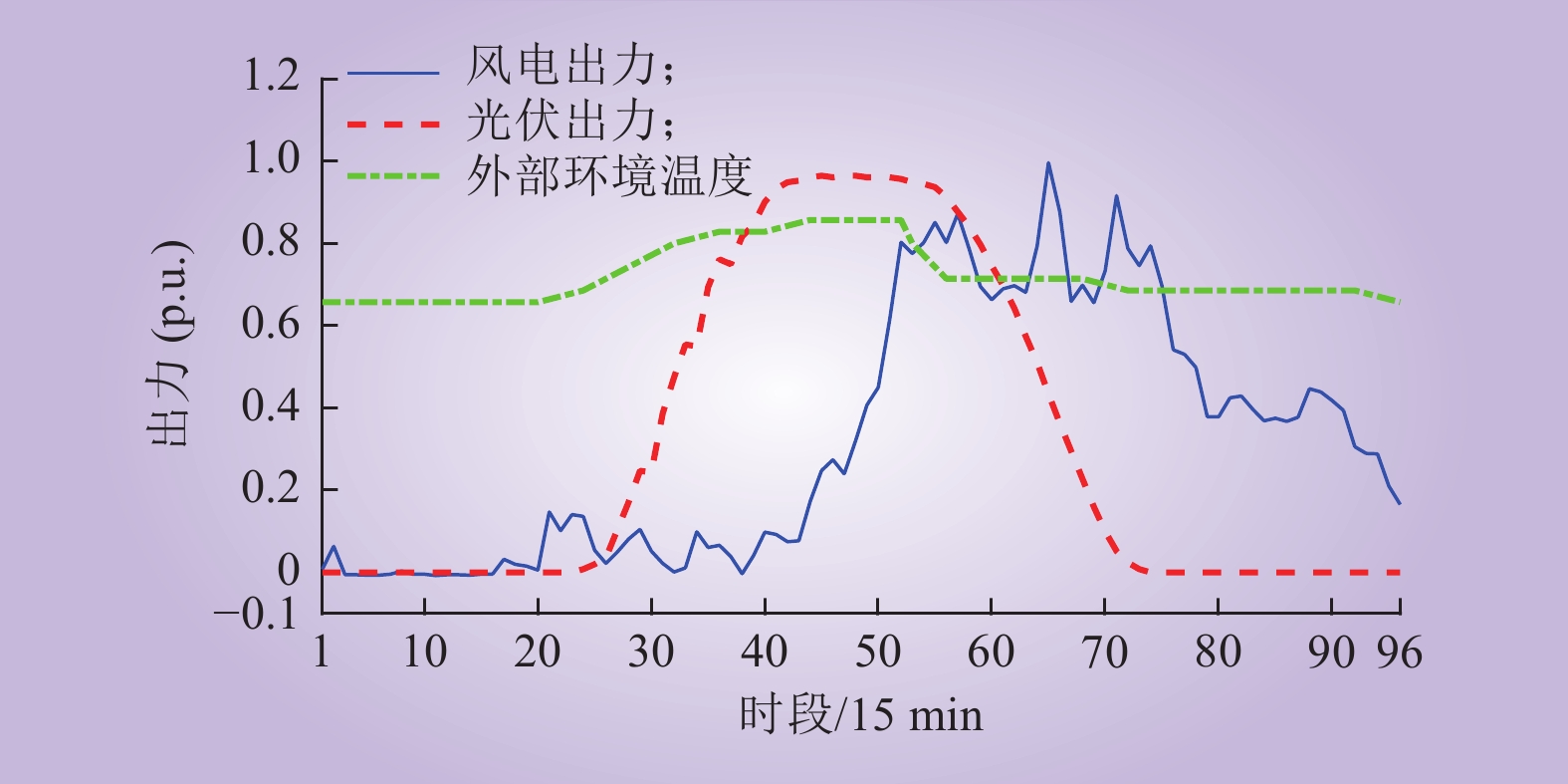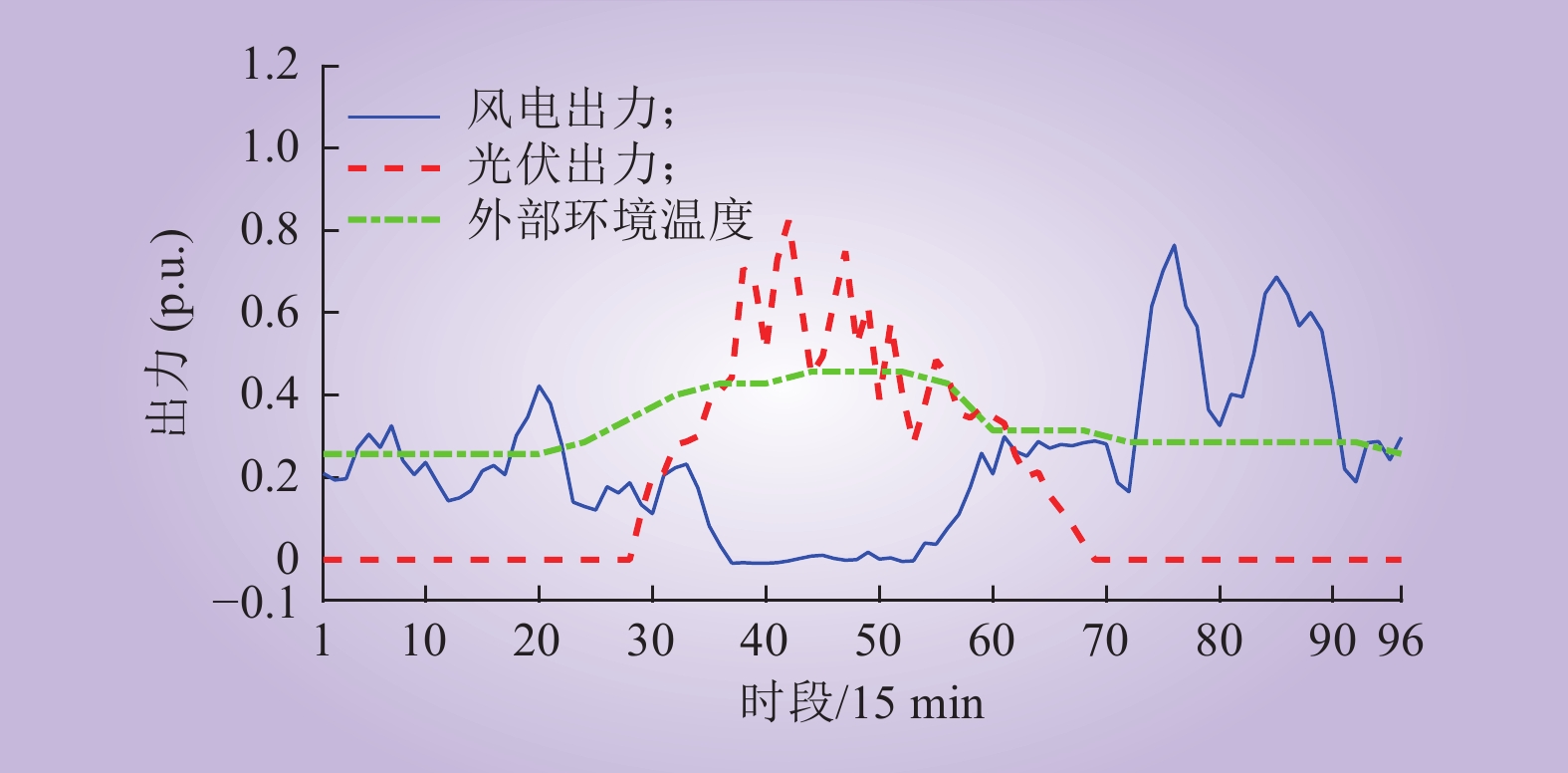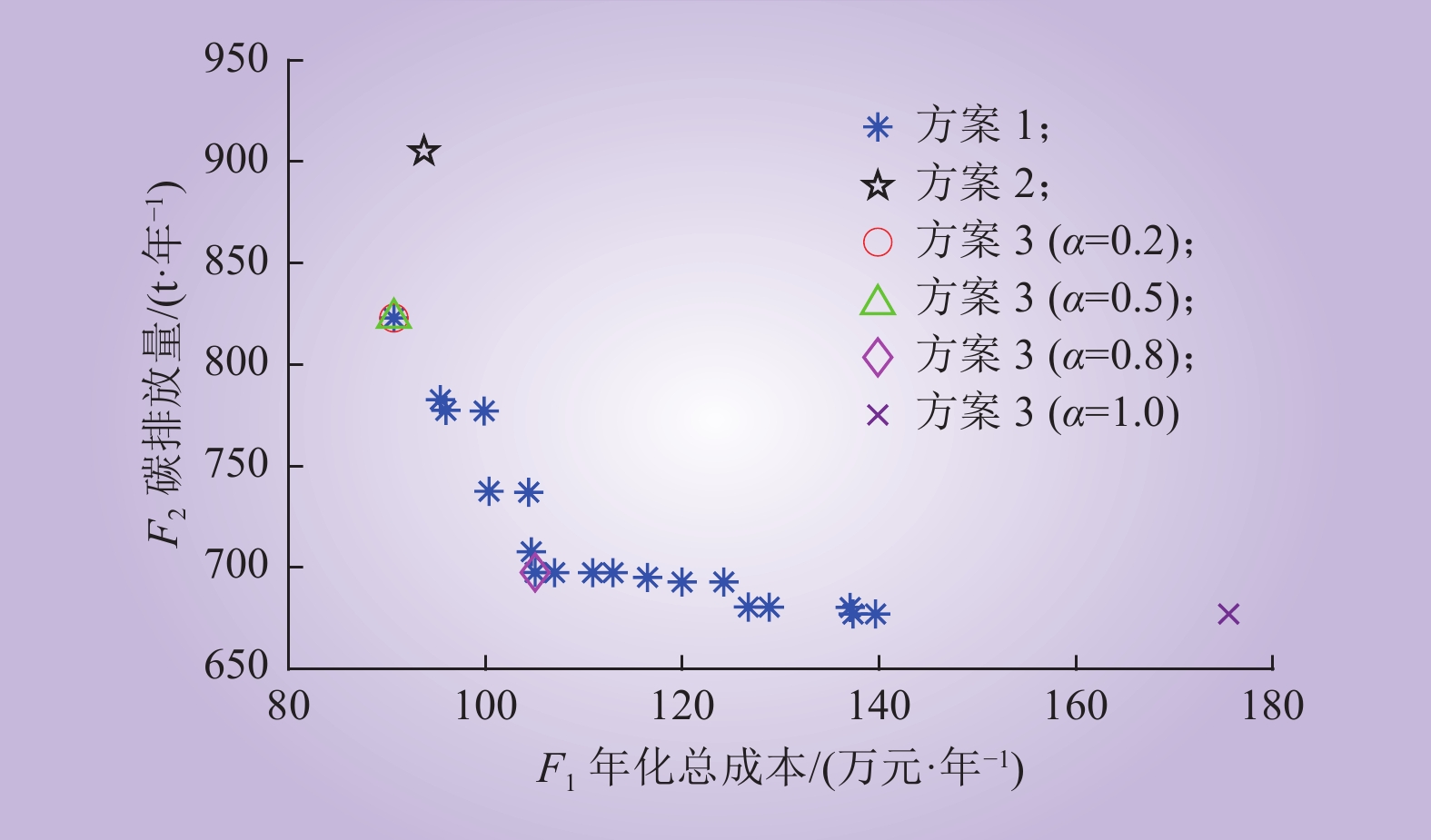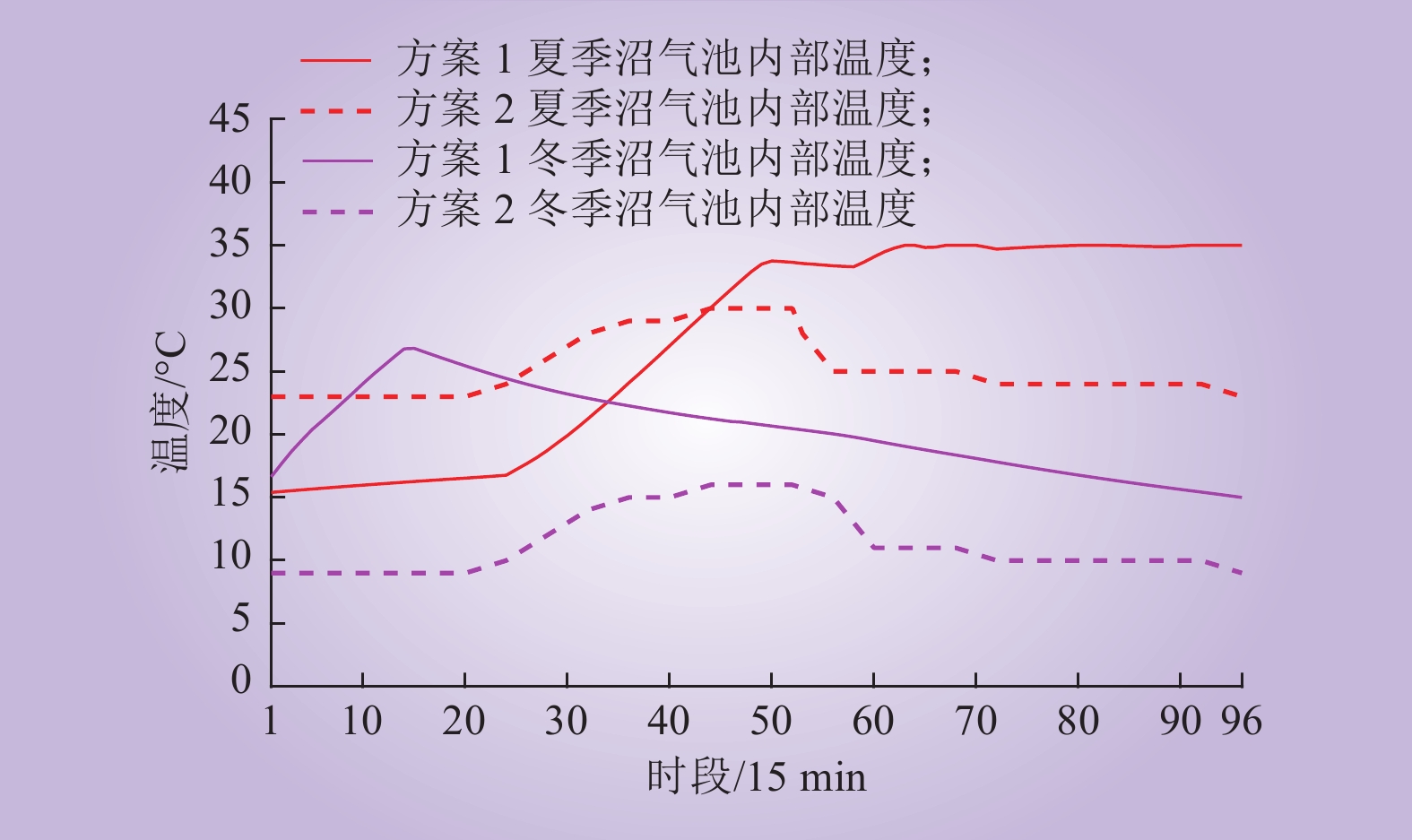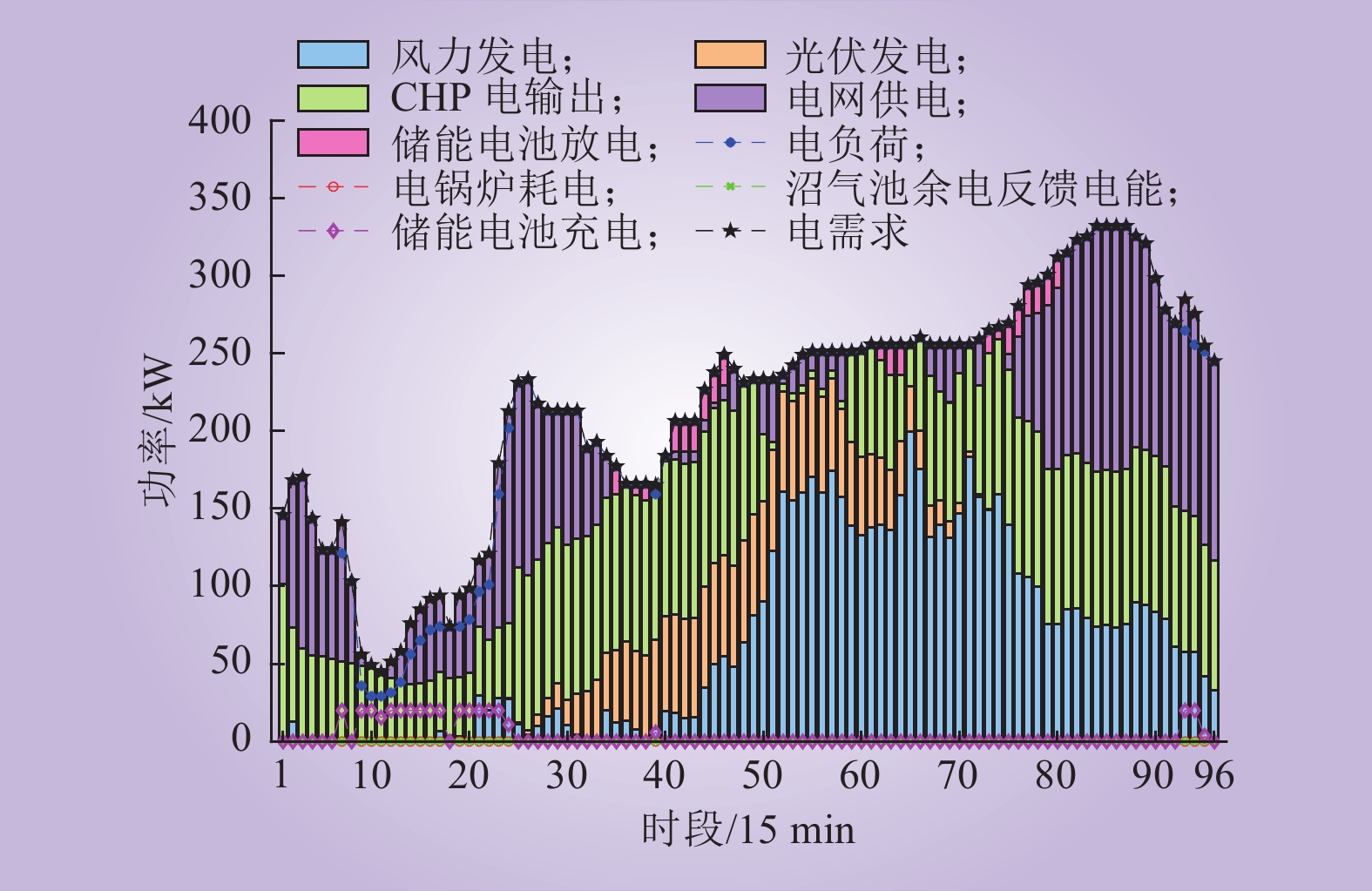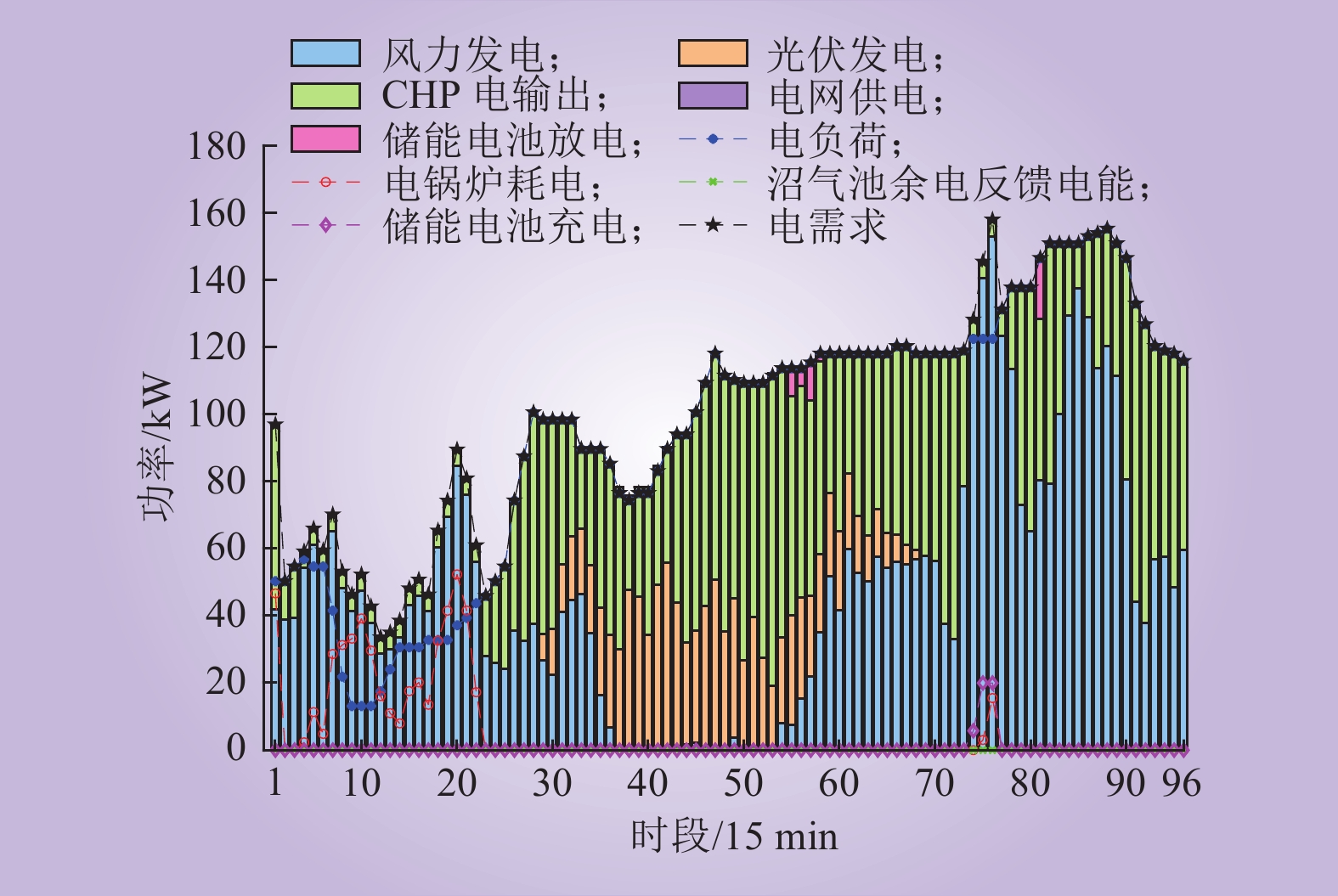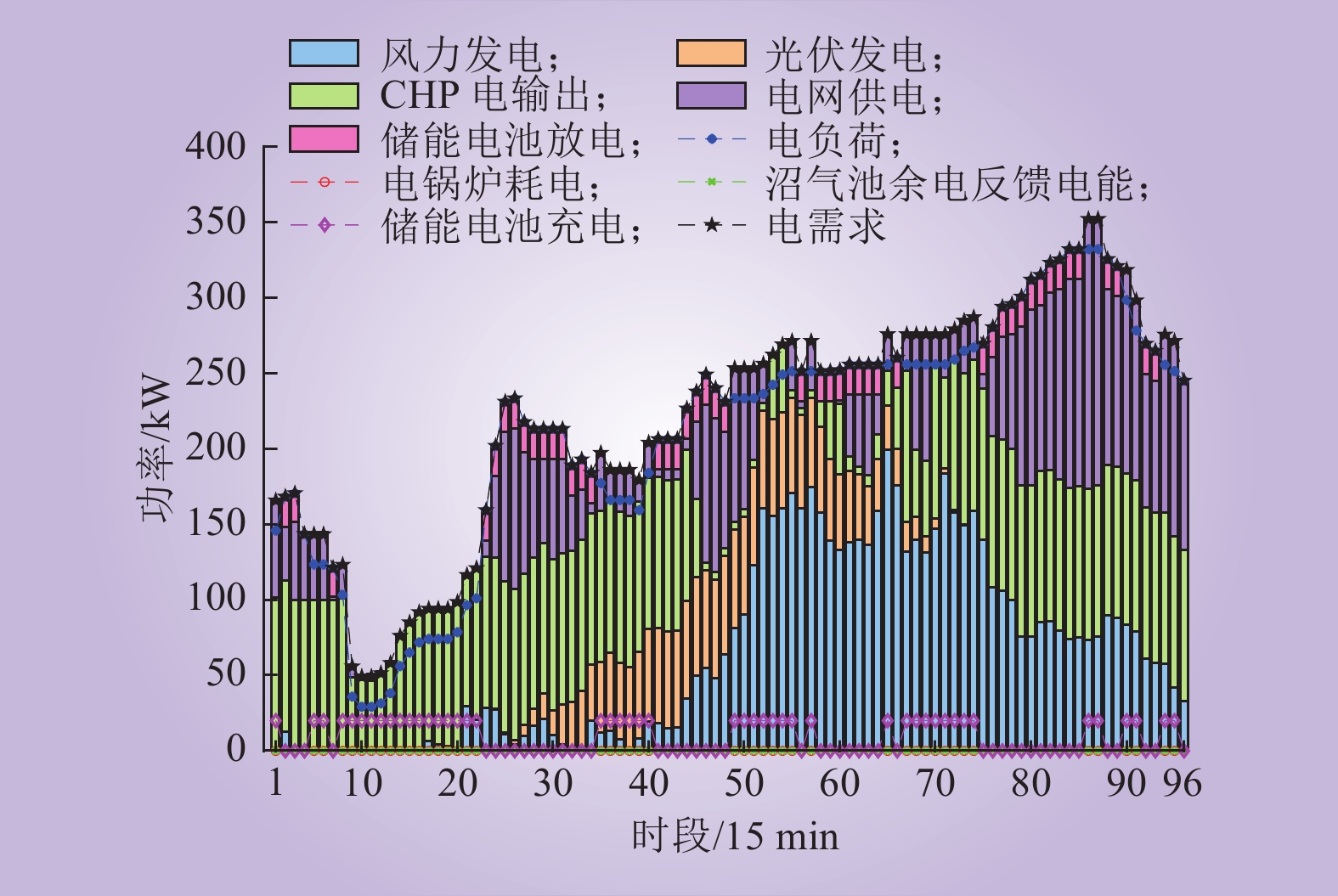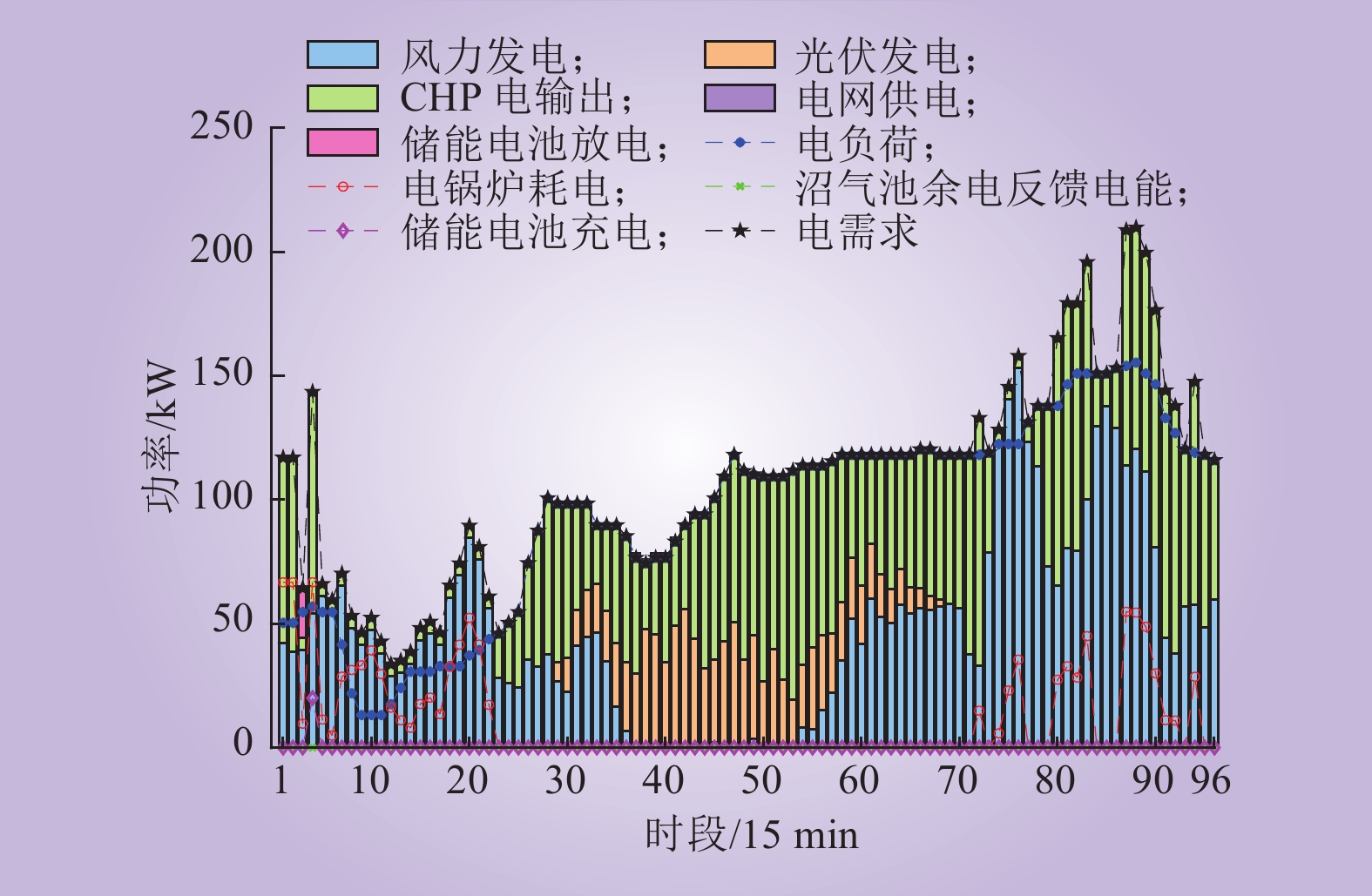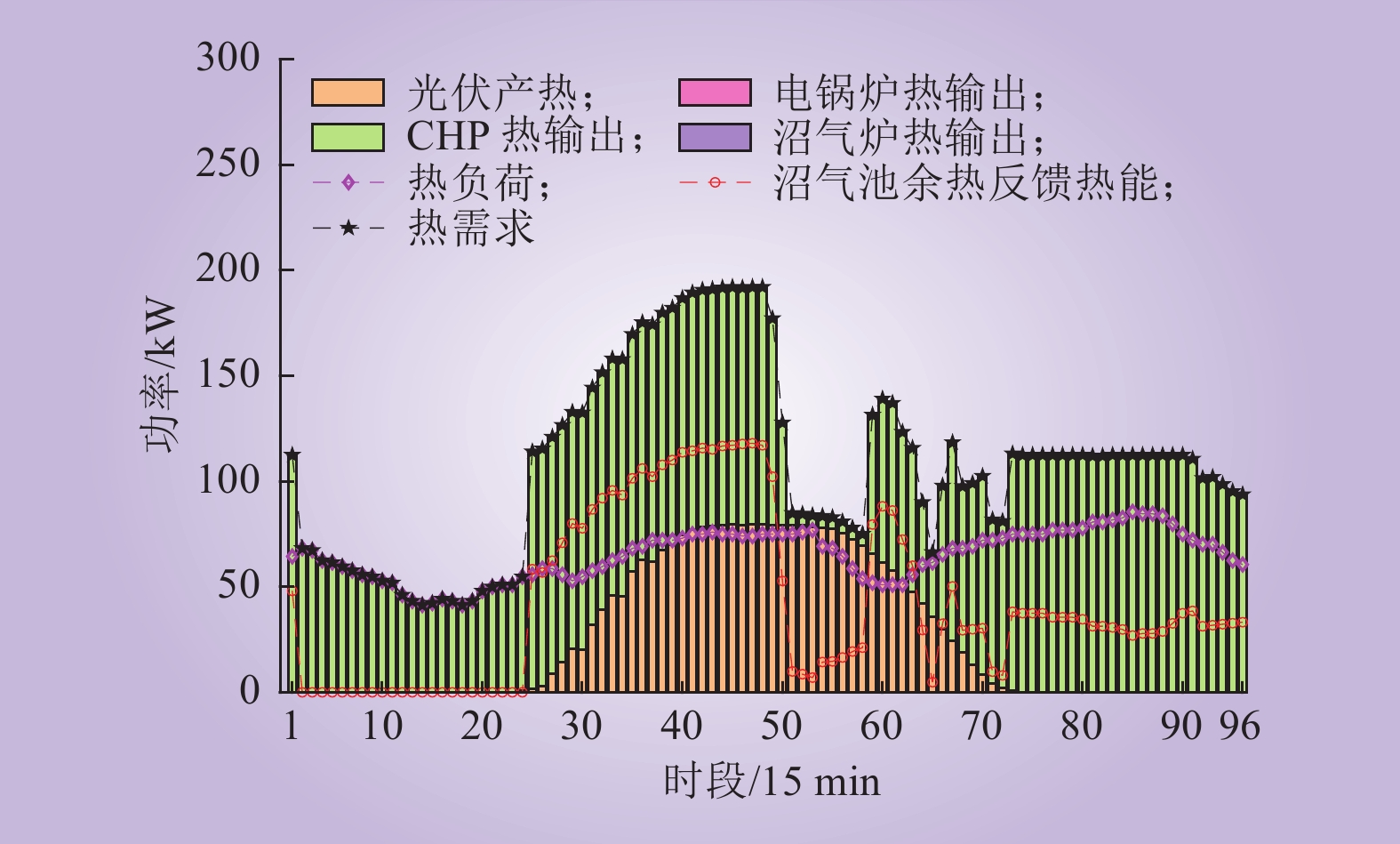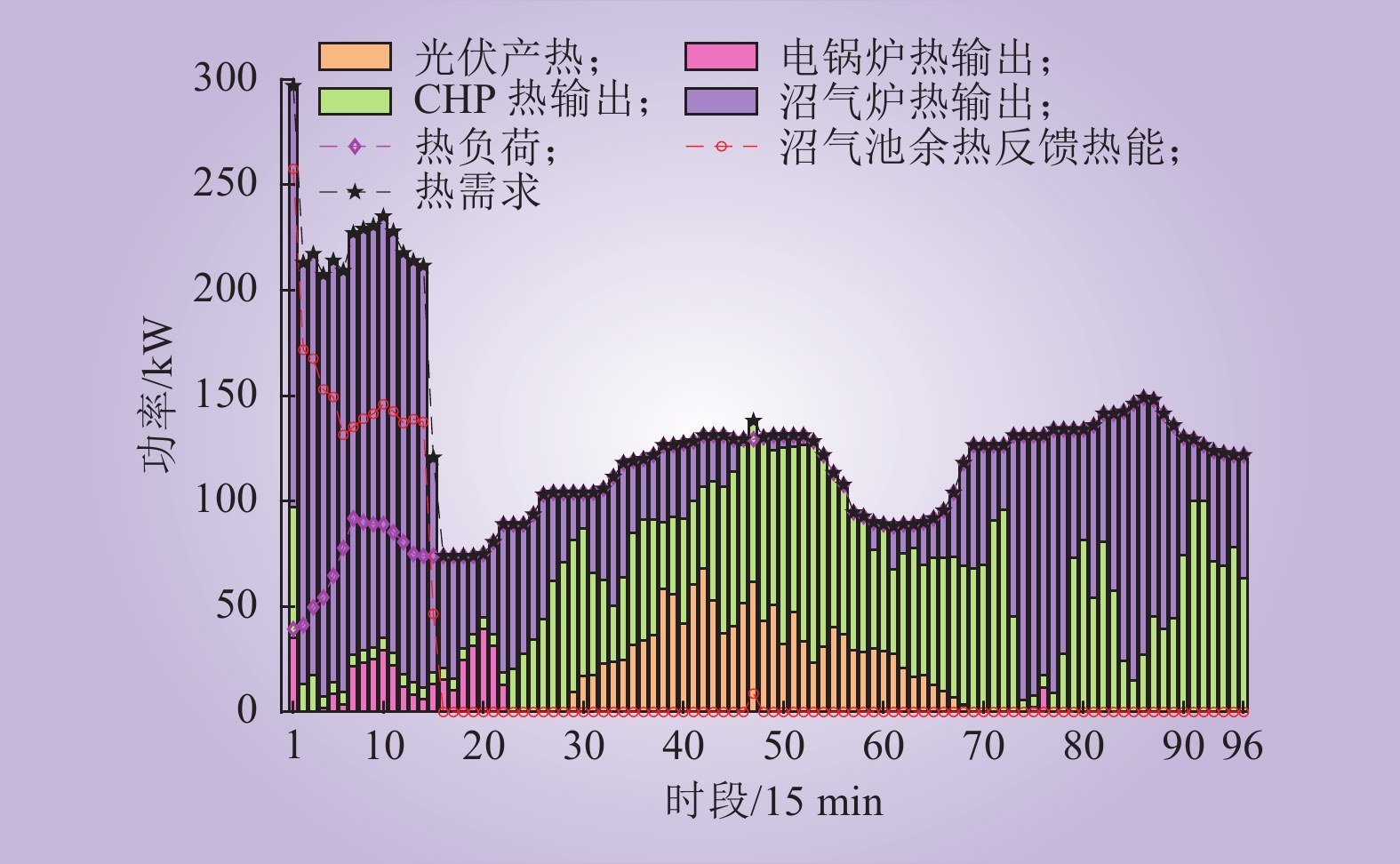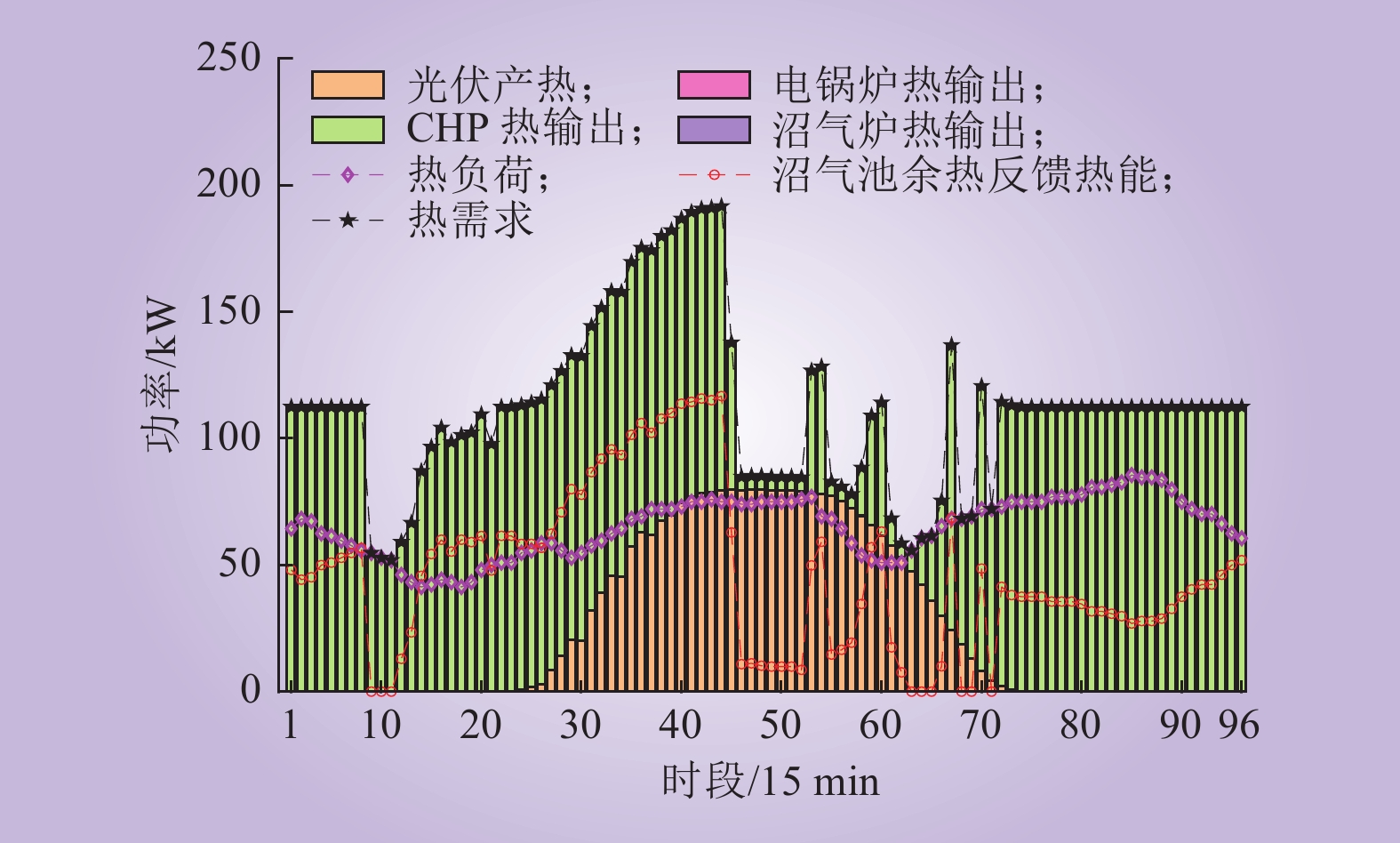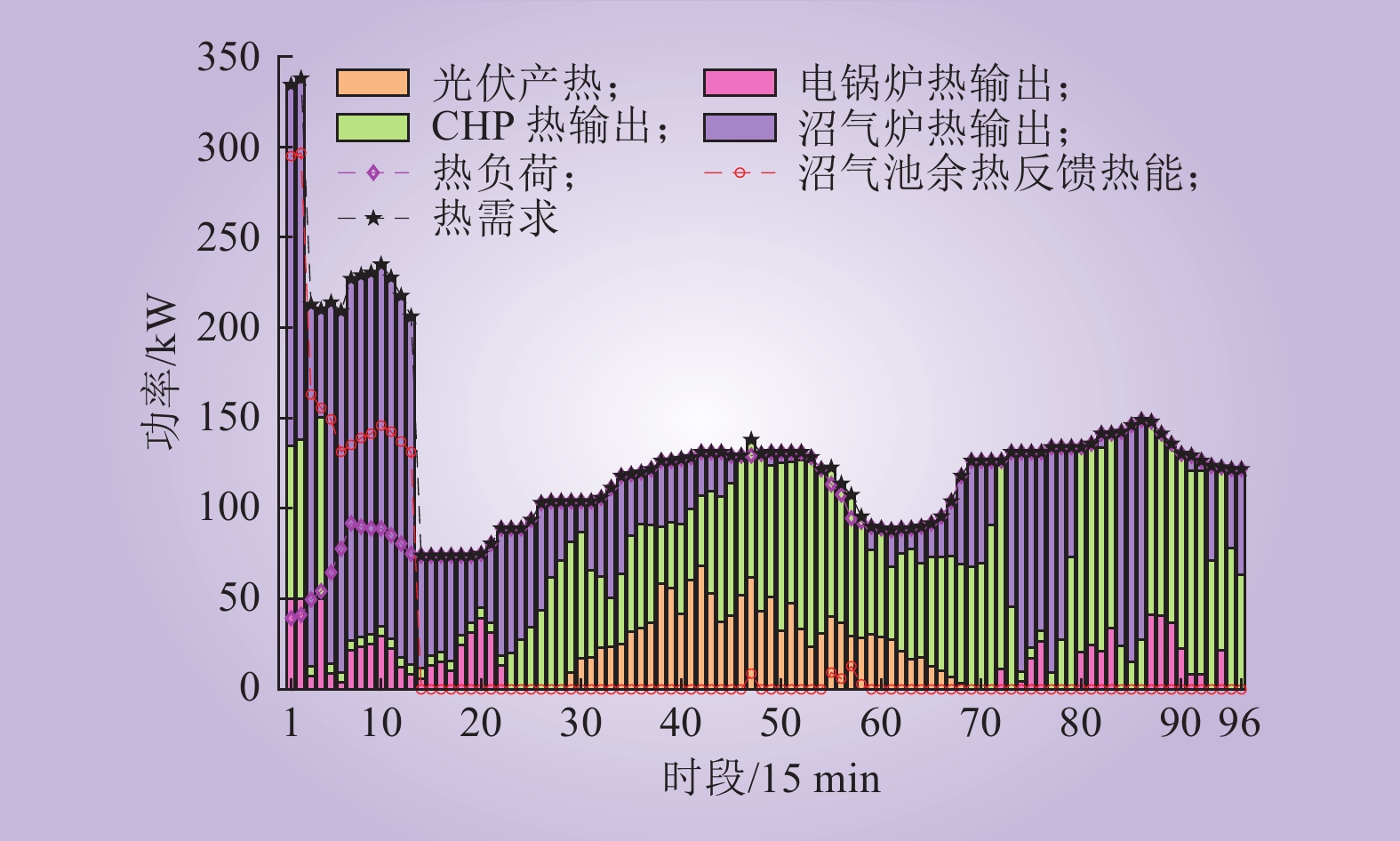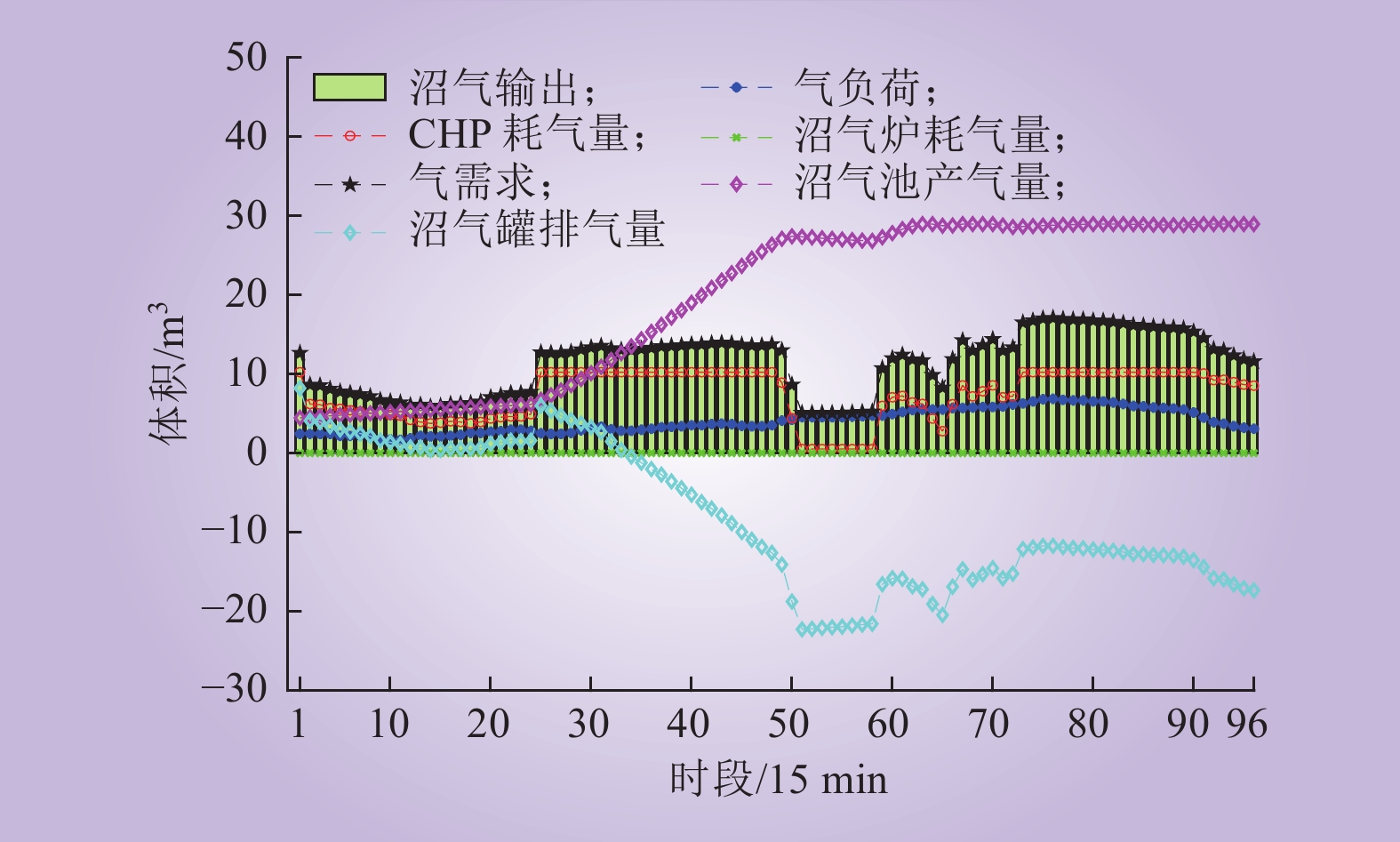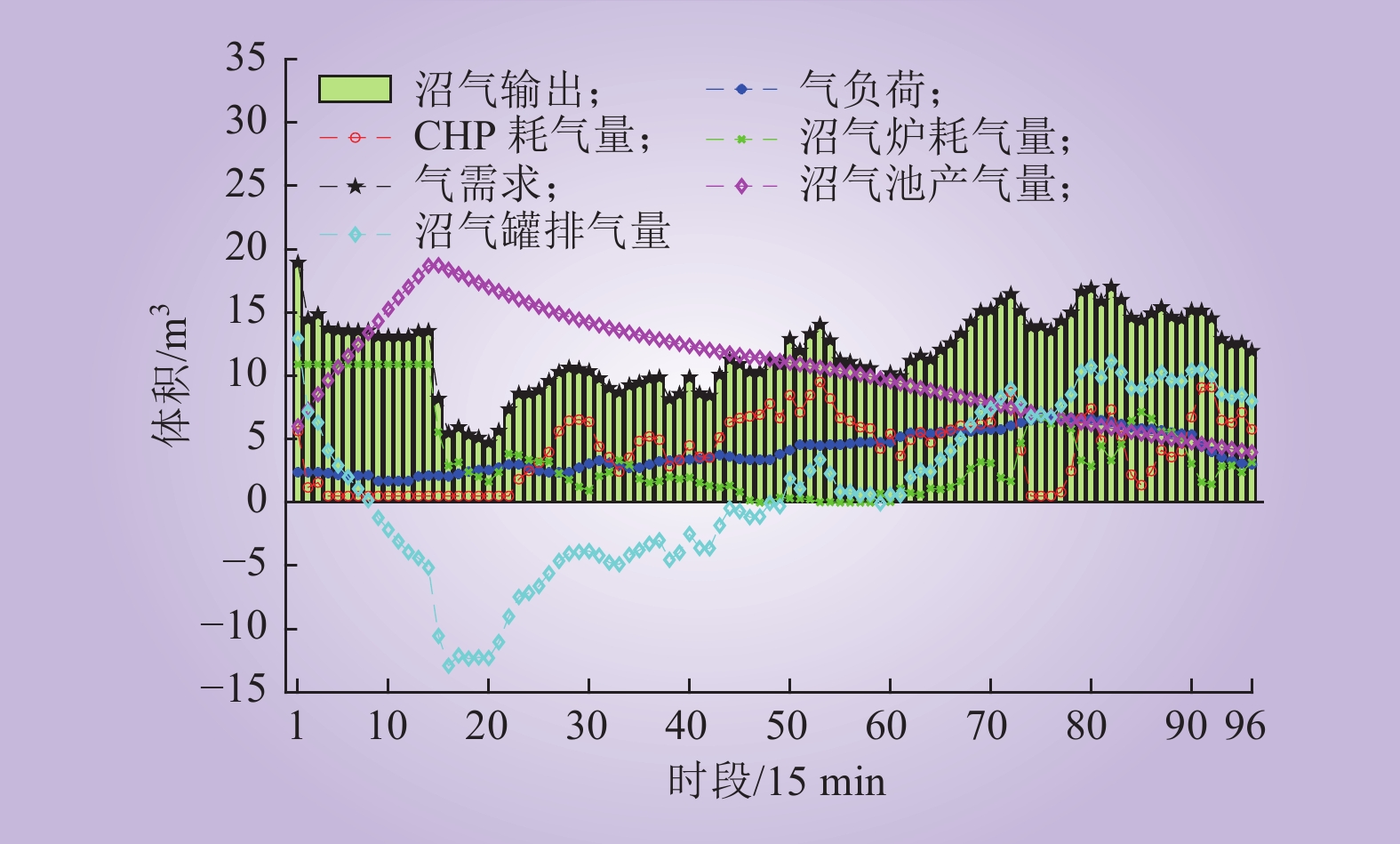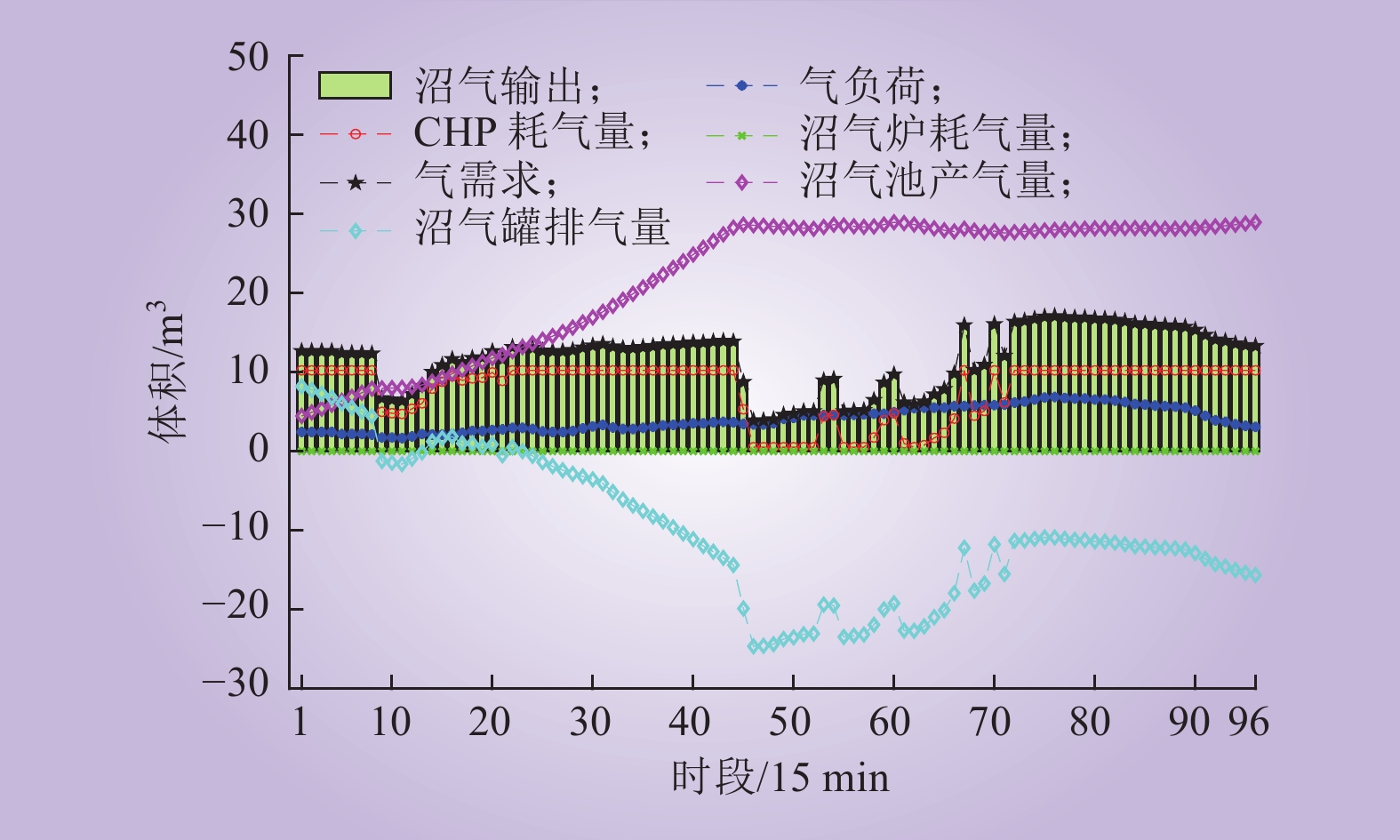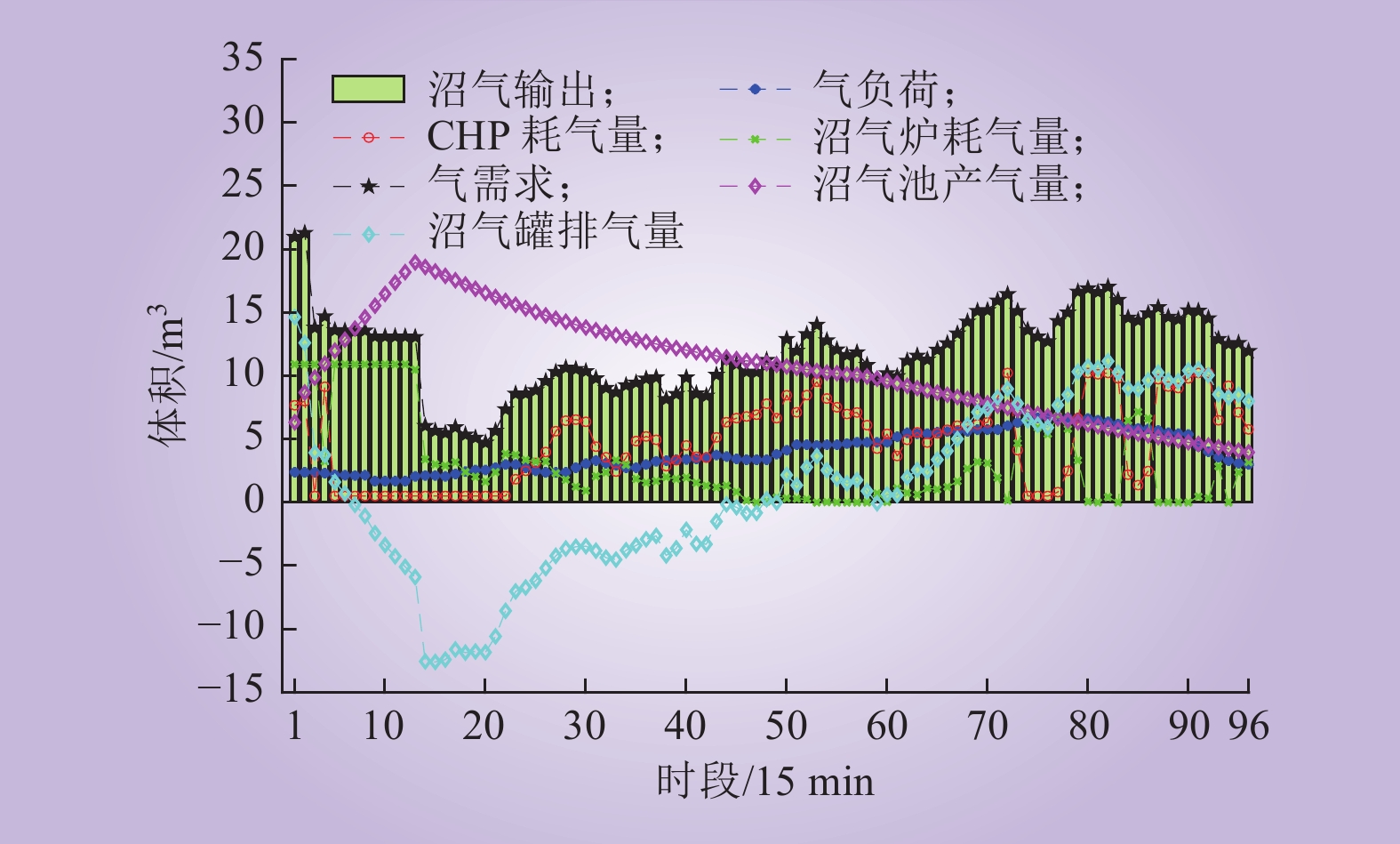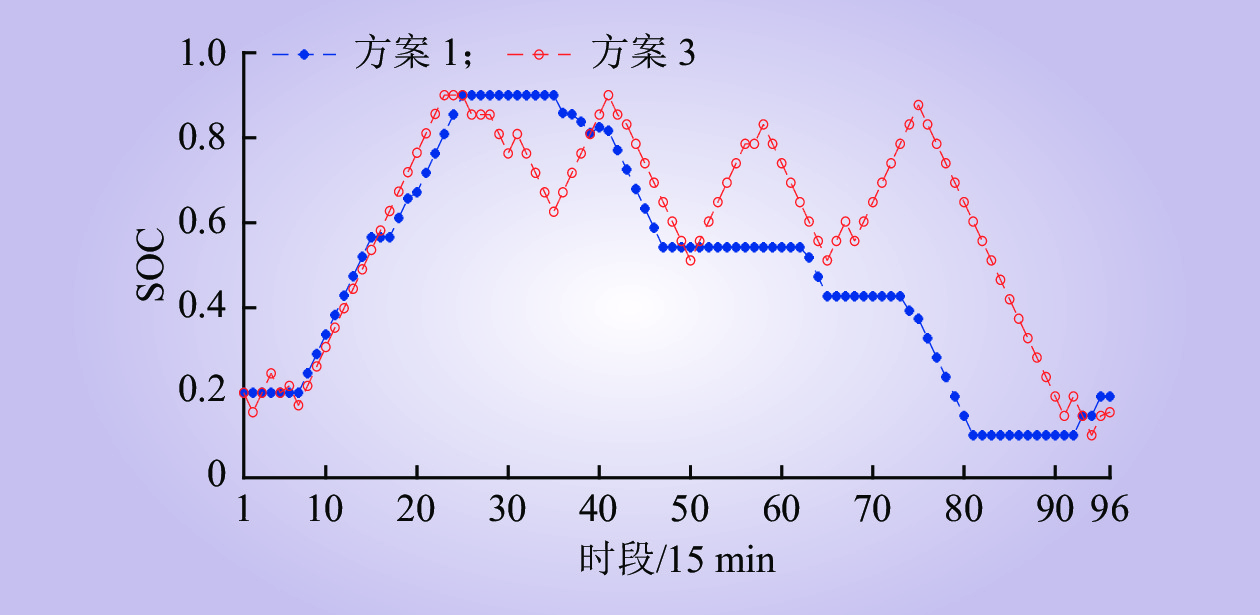| 1 |
ZHOU B, XU D, LI C B, et al. Optimal scheduling of biogas-solar-wind renewable portfolio for multicarrier energy supplies[J]. IEEE Transactions on Power Systems, 2018, 33 (6): 6229- 6239.
DOI
|
| 2 |
YU C T, LAI X Y, CHEN F, et al. Multi-time period optimal dispatch strategy for integrated energy system considering renewable energy generation accommodation[J]. Energies, 2022, 15 (12): 4329.
DOI
|
| 3 |
王瑞, 程杉, 徐建宇, 等. 基于主从博弈和混合需求响应的能量枢纽多时间尺度优化调度策略[J]. 电力自动化设备, 2023, 43 (1): 32- 40.
|
|
WANG Rui, CHENG Shan, XU Jianyu, et al. Multi-time scale optimal scheduling strategy of energy hub based on master-slave game and hybrid demand response[J]. Electric Power Automation Equipment, 2023, 43 (1): 32- 40.
|
| 4 |
王丹, 孟政吉, 贾宏杰, 等. 基于配置-运行协同优化的分布式能源站选型与定容规划[J]. 电力自动化设备, 2019, 39 (8): 152- 160.
|
|
WANG Dan, MENG Zhengji, JIA Hongjie, et al. Siting and sizing planning for distributed energy station based on coordinated optimization of configuration and operation[J]. Electric Power Automation Equipment, 2019, 39 (8): 152- 160.
|
| 5 |
宋晨辉, 冯健, 杨东升, 等. 考虑系统耦合性的综合能源协同优化[J]. 电力系统自动化, 2018, 42 (10): 38- 45, 86.
|
|
SONG Chenhui, FENG Jian, YANG Dongsheng, et al. Collaborative optimization of integrated energy considering system coupling[J]. Automation of Electric Power Systems, 2018, 42 (10): 38- 45, 86.
|
| 6 |
尤森槟, 程志江, 张子建, 等. 风光沼储微电网系统容量优化配置[J]. 中国沼气, 2020, 38 (1): 66- 70.
|
|
YOU Senbin, CHENG Zhijiang, ZHANG Zijian, et al. Optimal capacity allocation of PV-wind-biogas-battery microgrid system[J]. China Biogas, 2020, 38 (1): 66- 70.
|
| 7 |
LI C B, YANG H Y, SHAHIDEHPOUR M, et al. Optimal planning of islanded integrated energy system with solar-biogas energy supply[J]. IEEE Transactions on Sustainable Energy, 2020, 11 (4): 2437- 2448.
DOI
|
| 8 |
LAI C S, MCCULLOCH M D. Sizing of stand-alone solar PV and storage system with anaerobic digestion biogas power plants[J]. IEEE Transactions on Industrial Electronics, 2017, 64 (3): 2112- 2121.
DOI
|
| 9 |
李民, 刘钦浩, 赵冠, 等. 考虑多元产业协同的乡村综合能源系统规划[J]. 中国电力, 2022, 55 (8): 14- 22.
|
|
LI Min, LIU Qinhao, ZHAO Guan, et al. Rural integrated energy system planning considering multi-industry synergy[J]. Electric Power, 2022, 55 (8): 14- 22.
|
| 10 |
冯智慧, 吕林, 许立雄. 基于能量枢纽的沼–风–光全可再生能源系统日前–实时两阶段优化调度模型[J]. 电网技术, 2019, 43 (9): 3101- 3109.
|
|
FENG Zhihui, LÜ Lin, XU Lixiong. Two-stage optimal dispatch model of day-ahead and real-time for biogas-wind-solar fully renewable energy system based on energy hub[J]. Power System Technology, 2019, 43 (9): 3101- 3109.
|
| 11 |
谭洪, 颜伟, 王浩. 基于建筑物热能流分析的沼–风–光孤立微能网优化调度模型[J]. 电网技术, 2020, 44 (7): 2483- 2491.
|
|
TAN Hong, YAN Wei, WANG Hao. Optimal dispatch model of biogas-wind-solar isolated multi-energy micro-grid based on thermal energy flow analysis of buildings[J]. Power System Technology, 2020, 44 (7): 2483- 2491.
|
| 12 |
王瑞琪, 王新立, 郭光华, 等. 农村光-氢-沼储能综合能源系统建模与鲁棒优化调度[J]. 中国电力, 2023, 56 (5): 89- 98.
|
|
WANG Ruiqi, WANG Xinli, GUO Guanghua, et al. Modeling and robust optimal dispatch of rural integrated energy system considering PV-hydrogen-methane energy storage characteristics[J]. Electric Power, 2023, 56 (5): 89- 98.
|
| 13 |
边晓燕, 史越奇, 裴传逊, 等. 计及经济性和可靠性因素的区域综合能源系统双层协同优化配置[J]. 电工技术学报, 2021, 36 (21): 4529- 4543.
|
|
BIAN Xiaoyan, SHI Yueqi, PEI Chuanxun, et al. Bi-level collaborative configuration optimization of integrated community energy system considering economy and reliability[J]. Transactions of China Electrotechnical Society, 2021, 36 (21): 4529- 4543.
|
| 14 |
刘海涛, 朱海南, 李丰硕, 等. 计及碳成本的电-气-热-氢综合能源系统经济运行策略[J]. 电力建设, 2021, 42 (12): 21- 29.
|
|
LIU Haitao, ZHU Hainan, LI Fengshuo, et al. Economic operation strategy of electric-gas-heat-hydrogen integrated energy system considering carbon cost[J]. Electric Power Construction, 2021, 42 (12): 21- 29.
|
| 15 |
王志贺, 刘元园, 唐沂媛, 等. 考虑二氧化碳排放的冷热电联供系统的容量配置[J]. 电力系统及其自动化学报, 2017, 29 (8): 104- 110.
|
|
WANG Zhihe, LIU Yuanyuan, TANG Yiyuan, et al. Capacity configuration of CCHP system considering carbon dioxide emissions[J]. Proceedings of the CSU-EPSA, 2017, 29 (8): 104- 110.
|
| 16 |
白凯峰, 顾洁, 彭虹桥, 等. 融合风光出力场景生成的多能互补微网系统优化配置[J]. 电力系统自动化, 2018, 42 (15): 133- 141.
|
|
BAI Kaifeng, GU Jie, PENG Hongqiao, et al. Optimal allocation for multi-energy complementary microgrid based on scenario generation of wind power and photovoltaic output[J]. Automation of Electric Power Systems, 2018, 42 (15): 133- 141.
|
| 17 |
刁涵彬, 李培强, 吕小秀, 等. 考虑多元储能差异性的区域综合能源系统储能协同优化配置[J]. 电工技术学报, 2021, 36 (1): 151- 165.
|
|
DIAO Hanbin, LI Peiqiang, LÜ Xiaoxiu, et al. Coordinated optimal allocation of energy storage in regional integrated energy system considering the diversity of multi-energy storage[J]. Transactions of China Electrotechnical Society, 2021, 36 (1): 151- 165.
|
| 18 |
刘广, 白晓清, 刁天一. 考虑气电网络架构的沼-风-光综合能源微网优化调度[J]. 电网与清洁能源, 2020, 36 (12): 49- 58.
|
|
LIU Guang, BAI Xiaoqing, DIAO Tianyi. Optimal scheduling of biogas-wind-solar integrated energy microgrid system considering gas-power network architecture[J]. Power System and Clean Energy, 2020, 36 (12): 49- 58.
|
| 19 |
WU T, BU S Q, WEI X, et al. Multitasking multi-objective operation optimization of integrated energy system considering biogas-solar-wind renewables[J]. Energy Conversion and Management, 2021, 229, 113736.
DOI
|
| 20 |
白斌, 韩明亮, 林江, 等. 含风电和光伏的可再生能源场景削减方法[J]. 电力系统保护与控制, 2021, 49 (15): 141- 149.
|
|
BAI Bin, HAN Mingliang, LIN Jiang, et al. Scenario reduction method of renewable energy including wind power and photovoltaic[J]. Power System Protection and Control, 2021, 49 (15): 141- 149.
|
| 21 |
孙惠娟, 方杜, 彭春华. 基于可拓距K-均值聚类和正弦微分进化算法的风储联合系统优化配置[J]. 电力自动化设备, 2021, 41 (10): 20- 27.
|
|
SUN Huijuan, FANG Du, PENG Chunhua. Optimal allocation of wind-energy storage combined system based on extension distance K-means clustering and sine differential evolution algorithm[J]. Electric Power Automation Equipment, 2021, 41 (10): 20- 27.
|
| 22 |
吴静, 德格吉日夫, 谭忠富, 等. 计及P2G与CCHP技术的综合能源系统多目标协同优化模型[J]. 电测与仪表, 2021, 58 (5): 20- 30.
|
|
WU Jing, DE Gejirifu, TAN Zhongfu, et al. Multi-objective coordinated optimization model for integrated energy systems with power-to-gas and combined-cooling-heating-power technologies[J]. Electrical Measurement & Instrumentation, 2021, 58 (5): 20- 30.
|
| 23 |
张博智, 卢妍, 谭晨, 等. 光伏光热互补发电系统多目标容量优化研究[J]. 热力发电, 2022, 51 (5): 9- 17.
|
|
ZHANG Bozhi, LU Yan, TAN Chen, et al. Research on multi-objective capacity optimization of PV-CSP hybrid system[J]. Thermal Power Generation, 2022, 51 (5): 9- 17.
|
| 24 |
查永星. 综合能源系统调度优化的分解型交叉熵算法[D]. 深圳: 深圳大学, 2020.
|
|
ZHA Yongxing. Decomposition-based cross-entropy algorithm for scheduling optimization of integrated energy systems[D]. Shenzhen: Shenzhen University, 2020.
|



